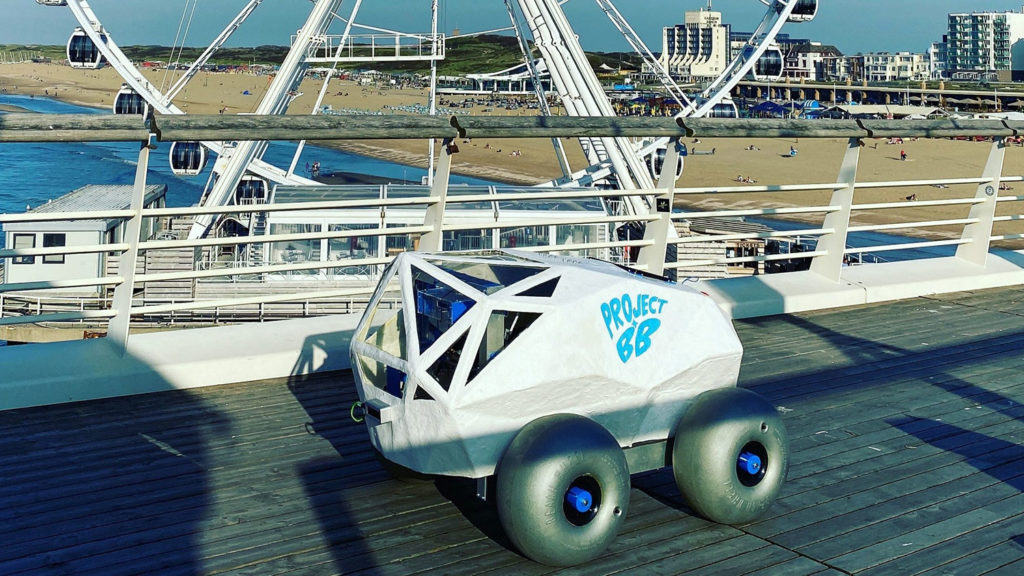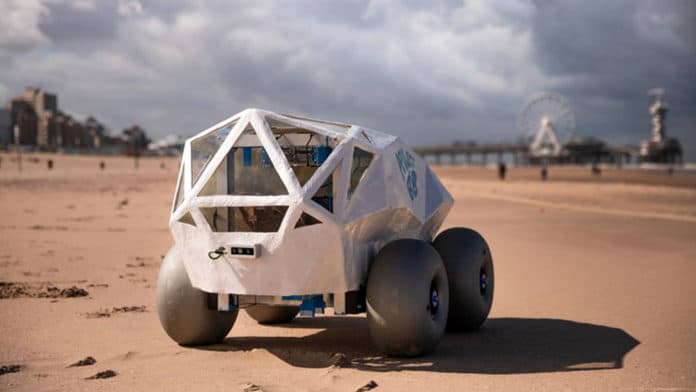Taking over human responsibilities by machines equipped with artificial intelligence is an inevitable process. For decades, robots and algorithms have been helping us out in repetitive, simple activities, and with the development of AI, machine learning, deep neural networks, and other such technologies, they can perform increasingly complex tasks. One such task is cleaning.
Martijn Lukaart and Edwin Bos, two Dutch engineers and founders of TechTics, have built a mobile, beach-cleaning machine that can spot cigarette butts, pluck them out and dispose of them in a safe bin.
Every year 4.5 trillion cigarette butts end up in the environment. The fibrous fragments can take 14 years to disintegrate. On beaches, they are the most common human remnant, and when water touches discarded cigarette butts, the filters leach more than 30 chemicals that are “very toxic” to aquatic organisms and pose a major hazardous waste problem. This garbage not only harms the environment but also looks unsightly and interferes with relaxing on the beach. Bos and Lukaart from TechTics decided to do something about it, and that’s how BeachBot was born.

With help from Microsoft’s artificial intelligence systems, the BeachBot learns how to better find the strewn filters, even if they’re partially buried in the sand. It then scoops these cigarette butts up from the sand and disposes of them in an internal bin. Later, people empty that bin into a trash container. Rolling atop the sand on four puffy-looking wheels, the beach-cleaning robot uses two onboard cameras to look ahead (to avoid people and objects) and to look down.
The BeachBot is still in early learning via the software giant’s Trove AI system, which helps provide image sets for this kind of machine-learning task. Teaching the bot how to find its prey requires a lot of people. TechTics must show the beach rover (and, specifically, the AI system) thousands of photos of cigarette butts, all lying about in various states, such as partially hidden, so it can recognize and remember them.
Through a transparent data marketplace, the Trove app connects AI developers with photo takers. In this case, people can submit their photos, and TechTics directly pays contributors 25 cents per accepted image. TechTics is seeking to eventually collect 2,000 photos of cigarette butts on the beach via Trove to help the robot fully understand what it’s looking for. To date, it has obtained about 200 useful images, but BB is already able to seek out waste with two onboard cameras, use its robotic arms, and put cigarette butts into an onboard bin.
BeachBot, which is about 80 centimeters wide, has shown it can handle part of that work. During its first demo, it scooped up ten cigarette butts in 30 minutes. Considering it only has a one-hour runtime on a full charge, this is not extremely effective. But it’s better than nothing at all.
TechTics is currently working on two smaller robots so that BB has a team of helpers. The smaller bots will map the beach. When they locate cigarette butts, they can message BeachBot, or other beach-cleaning vehicles to request removal.
“We start with cigarette butts. That’s the world’s most littered item,” Bos says. “In the future, we want the robots to detect a range of other litter.” He envisions the bots working autonomously, powered by solar energy.
